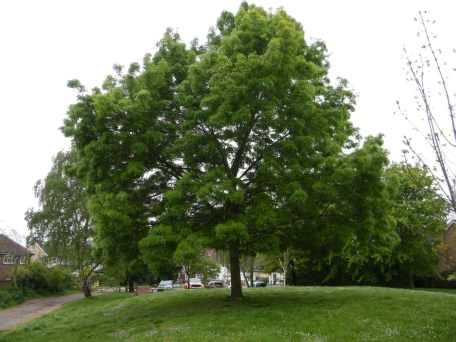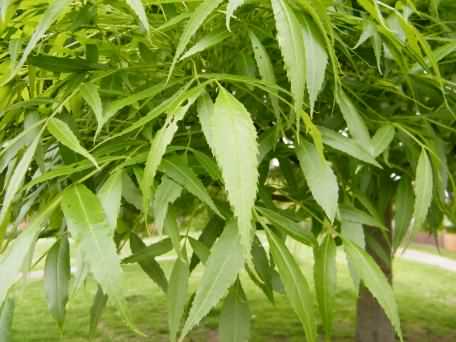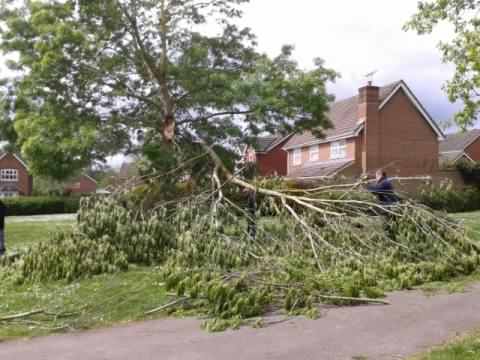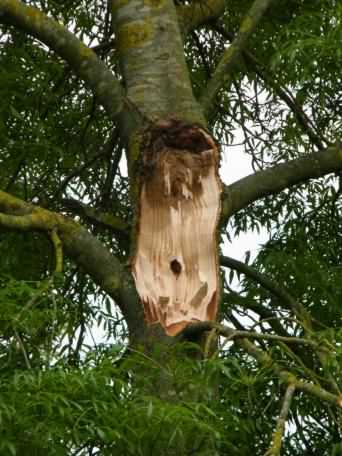
Typical

Newly emerged leaves

Storm damage

Damaged node
Click any photo for a larger image
Raywood Ash - Fraxinus angustifolia var. Raywood
Syn. - Fraxinus oxycarpa 'Raywood'
Family - Oleaceae
Also known as - Claret Ash, Narrow Leaved Ash
A commonly planted cultivar of the urban landscape in many countries where mature trees can grow to 12–15m (40–50ft) tall with a spread of 6–9m (20–30ft) into a full rounded canopy, however many will not make this size as the wood is quite brittle and can be prone to splitting at the branch nodes especially in the spring when the leaves emerge. Palmate leaves of seven to eleven dark green glossy serrulate and lanceolate leaflets each 5–10cm (2–4in) long are pinnately opposite, the leaves turning an attractive burgundy to purple colour in the Autumn.
Raywood Ash was discovered as a seedling in a group of assorted Ash trees at a nursery in Australia in about 1910, and later grown nearby at Raywood, a town in Northern Victoria, then introduced to Britain in 1928 and North America in the mid 1950's.
Ash Dieback Disease –
Raywood Ash and the UK native Common Ash – Fraxinus excelsior can be infected by a fungal infection - Hymenoscyphus fraxineus or Ash dieback disease, now becoming a nationwide problem, Ash dieback was found in Brickfields Park in 2016. Raywood Ash also appears to suffer from another dieback disease caused by a fungal pathogen Botryosphaeria, however this strain is thought to not currently be in the UK. For a description of Ash dieback see the Common Ash species page from the link above.
 Typical |
 Newly emerged leaves |
 Storm damage |
 Damaged node |
| Photos ©2019– Click any photo for a larger image | |||
Site design ©1999– Brickfields Country Park - Privacy -